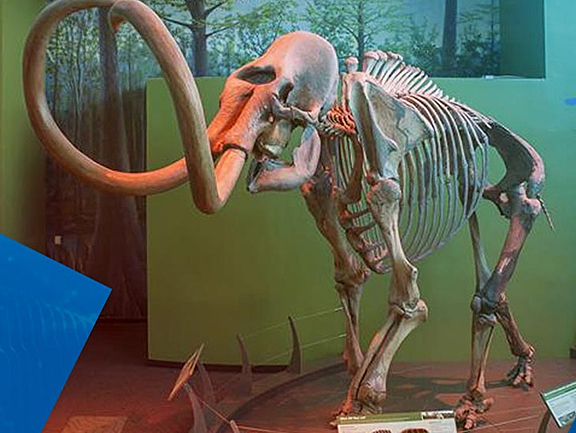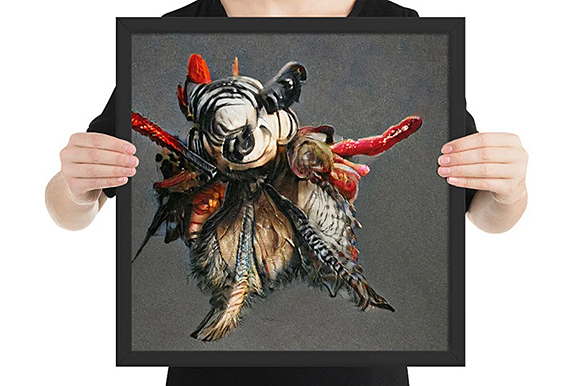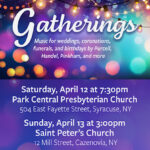A.I. Art Artificial Intelligence Generated Art
I got a promotional email on AI Art. I could obtain an app, it assured me, that would generate a piece of art to my specifications, simply by inputting verbal commands.
Well, it’s not that easy – but it is real.
I went to one site online (https://deepai.org/) and entered my verbal command: Dog with Top Hat. I chose a style – “oldstyle” – and then had it generate the art. This is what I got:
It’s actually pretty cute. Options include only what shape you want to use for your output, and it can be downloaded as a jpg.
According to https://www.v7labs.com/blog: “AI algorithms can generate images or videos based on a set of parameters or create new images by combining and altering existing images. Neural networks can be used to create images or videos that mimic the style of a particular artist or to create images or videos that are similar to a particular type of art.”
The first part of that claim is intriguing – even if one lacks a “hand,” or the ability to make it do what the “artist” wishes, the AI algorithm can use the ideas, or the mental sketch of the person to create something unique. But the second part might raise a few alarms: “mimic the style of a particular artist.” So, anyone can be Leonardo?
According to the blog, as early as the 1960s, simple shapes could be created using computers and simple programs for numbers and placements of these shapes. Not too long after that, CAD, or computer-aided-design enabled designers to create things like a house layout, for example, without having to hand-draw it – and way back when I was playing with software that would “build” a 3-D model of a flat “design” to my specifications. I was able to create “wireframes,” again with relatively simple software, that would render a 3-D object for me, without the labor (or talent) to do it on paper.
AUTOCAD and TURBOCAD were two favorites.
The blog continues to challenge our imaginations as it presents “One interesting example of recent AI used for creating art is the ‘Artificial Natural History’ (2020) which is an ongoing project that explores ‘speculative, artificial life through the lens of, what the author Sofia Crespo calls, a ‘natural history that never was.’
“Crespo essentially formed a distorted series of creatures with imagined features that require entirely new sets of biological classifications.”
Which is to suggest that, rather like “God” playing with Eden, the artist can take a life form and put it under different conditions (light sources, what it breathes, its method of locomotion, etc.) and allow it to “come to life.”
As has been noted by now, CGI (computer generated imagery) has the power to create amazing SFX (special effects) in film production – and we can “see” things that look astoundingly real, yet never were except in the minds of their creators. Many films we see contain whole scenes created by computer. The orcs marching toward Helmsdeep were simply computer generated images – multiplied, and given instructions about how to do combat when met with an enemy.
And, as we now know, what we are sure we “see” might be Photoshopped (a program that has more or less become a verb when it is applied to what is often done for nefarious purposes): I take a photo, and perhaps with some skill, adjust it to have a person doing something they never did, or perhaps enhancing my looks, or reducing my girth, to look more attractive on a dating app. We need to be critical of anything we observe, consider the source, and examine it carefully for telltale signs of manipulation.
A very amusing app that works – rather amazingly – on your smart phone is something called “Reface.” You use an image of yourself or a friend, and find a short video clip or image that’s part of Reface’s library, and you create a new look at your friend as Rocky saying “yo,” or you as the Mona Lisa.
A recent dust-up of AI generated art was over the app, Lensa. As noted on https://www.nbcnews.com/ “For many online, Lensa AI is a cheap, accessible profile picture generator. But in digital art circles, the popularity of artificial intelligence-generated art has raised major privacy and ethics concerns.
“Lensa, which launched as a photo editing app in 2018, went viral last month after releasing its ‘magic avatars’ feature. It uses a minimum of 10 user-uploaded images and the neural network Stable Diffusion to generate portraits in a variety of digital art styles.”
Granted, things were already becoming tight for artists creating work for hire for, say, a graphic novel or comic story. The tools at their command themselves lowered the price of the work. Once I created a character, the computer would help me move that character around, adjust its expression, or put it in a variety of situations and poses – something that once required hours of careful pen-and-paint work. But with apps like the one described above, anyone might “borrow” the style of a character or artist and apply it to their own work.
As one AI programming organization defended its work, movies didn’t eliminate theatre, and accounting software didn’t eliminate the profession. So with AI, it most likely won’t go away – but it might also change the way we value art, and perhaps, how we perceive the world around us. 











